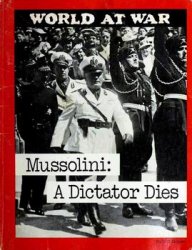RAF had the most advanced air defence system in the world.
In September 1940 Tizard went to the USA to introduce Britain’s principal military-scientific developments, including radar and the proximity fuse, to those whom it was hoped would one day be allies. Thereafter, due to tension with Cherwell, Tizard was relegated to the sidelines. After the war he became scientific adviser to the government. ANF.

Tizard: British wartime “boffin”
Tobruk, British capture of (January 5—22 1941). As soon as Bardia had fallen, Tobruk was invested by 6th Australian and 7th Armoured Divisions. The Australian assault on January 21 led to the surrender of the 25,000-strong garrison.
Tobruk, British reconnaissance in force towards (Operation “Brevity”) May 15-17 1941. Made by Gott with 7th Armoured and 22nd Guards Brigade Groups. Only significant success was recapture of Halfaya Pass.
Tobruk, German siege of (April 11-December 10 1941). Rommel launched hastily organized attacks on the fortress perimeter on April 13, 16 and 30, all of which were thrown back by 9th Australian Division (Morshead). British reinforcement and supply by sea brought about a stalemate, which lasted until the successful British offensive to relieve Tobruk in November 1941. At the request of the Australian government, their troops were gradually replaced by 70th Division and 1st Polish Carpathian Brigade from August to October at considerable cost in air effort and in naval escort. Rommel lifted the siege on December 10 after his defeat at Bir el Gubi.
Tobruk, Rommel’s capture of
(June 20-21 1942). After Eighth Army’s defeat at Gazala, Rommel once again invested Tobruk, garrisoned by the inexperienced 2nd South African Division (Klopper), reinforced with British infantry and tanks. Due to confusion in the British Command after Gazala, Tobruk was left inadequately supported, enabling Afrika Korps (Nehring) to breach the southeastern side of the defences in a blitzkrieg style assault, bringing about the collapse of resistance next day with the loss of 32,000 men.
Tobruk, second British offensive to relieve (Operation “Battleaxe”) June 15—17 1941. The arrival of the “Tiger” convoy with replacement tanks enabled Wavell, against his better judgment, to carry out Churchill’s instructions to mount an early attack on Rommel’s forces investing Tobruk. The reconstituted Western Desert Force (Beresford-Peirse) - 7 th Armoured and 4th Indian Divisions — attacked the fortified positions held by 15th Panzer Division on the Egyptian frontier on June 15 and was repulsed largely due to the Germans’ novel use of 88mm Flak guns against tanks. Rommel used 5th Light Division to turn the British desert flank during the 16th, forcing them to break off the battle early next day. WGFJ.
Tobruk, third British offensive to relieve (Operation “Crusader”) November—December 1941. Au-chinleck attacked with the newly constituted Eighth Army (Cunningham), consisting of XIII Corps (Godwin-Austen) and XXX Corps (Norrie). XIII Corps, with the New Zealand and 4th Indian Divisions, was to pin down the Axis troops on the Egyptian Frontier, while XXX Corps with 7th Armoured and 1st South African Divisions made a wide turning movement through the desert along the Trigh el Abd towards Tobruk, seeking an armoured battle with the Afrika Korps (Cruewell). As XXX Corps approached Tobruk, the garrison was to break out to meet them.
The battle was fought in four phases. In the first phase, (November 18-21), XIII Corps advanced to within 10 miles (16km) of Tobruk with its northern flank threatened, first by 21st Panzer Division, and then by 15th Panzer Division, bringing on the tank battles of Gabr Saleh and Sidi Rezegh in which the Afrika Korps just gained the upper hand. The Tobruk garrison broke out on November 21, but did not manage to link up with 7th Armoured Division at Sidi Rezegh.
In the second phase (November 22-23), Cruewell concentrated his armour, overran 7th Armoured Division’s positions in the First Battle of Sidi Rezegh on the 22nd, and the next day annihilated 5th South African Brigade in the Battle of Totensonntag. Rommel had by now won tank superiority.
During the third phase (November 24-December 1), Rommel personally led the Afrika Korps southeastwards in a dash to rescue his units on the Egyptian frontier, which were surrounded by XXX Corps. He scattered British headquarters and logistic units in his path, and entered Bardia, where he refuelled on the 26th. He fought his way back westwards and engaged New Zealanders in the Second Battle of Sidi Rezegh (November 292-December 1). Although he drove them away from Tobruk, his losses had been too great to maintain the siege.
Rommel made one last abortive effort in the final phase of the battle (December 2—January 6) by attacking XXX Corps at Bir el Gubi before accepting defeat. He lifted the siege of Tobruk on December 10, and withdrew into Tri-politania by January 6 1943 to await a re-supply of tanks.
During Operation “Crusader”, Cunningham’s health failed, and he was replaced in command of Eighth Army by Ritchie. British losses amounted to 15 percent of their forces engaged; the Germans 23 percent; and the Italians 44 percent. WGFJ.
TOC H. British Army signallers’ version of the initials of Talbot House, a World-War-I rest house for all ranks at Poperinghe, near Ypres. Opened in December 1915 as a memorial to Lt Gilbert Talbot, who had been killed at Hooge in July that year. Later, Talbot House became the birthplace of a worldwide Christian movement, inspired and guided by one of its original founders, the Rev “Tubby” Clayton.




 World History
World History









